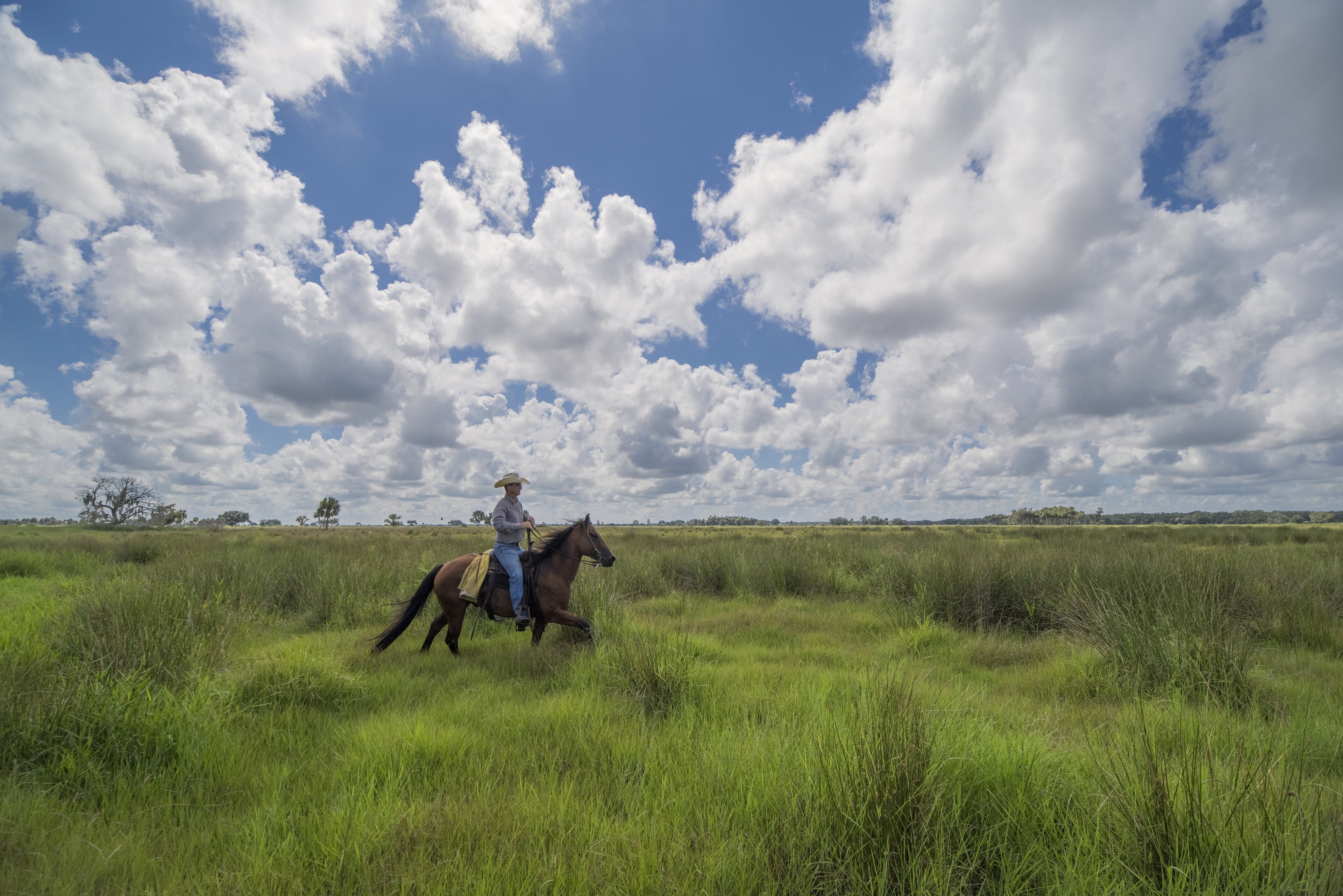
BUCK ISLAND RANCH:
SUSTAINABLE RANCHING
Archbold’s working cattle ranch
Archbold’s Buck Island Ranch is a 10,500-acre working cattle ranch located within the Headwaters of the Everglades.
Nearly 3,000 head of cattle graze across a range of semi-native grasslands and improved pastures. While operating as one of the state’s largest working ranches, Buck Island Ranch remains fully integrated into Archbold’s larger science and conservation mission.
Research in action
Where agriculture meets ecology
For more than 30 years, Buck Island Ranch has been home to Archbold’s Agroecology Program. Here, scientists and ranchers work together to understand the impact of ranching and improve its sustainability.

 Photo by: Haoyu Li
Photo by: Haoyu LiIn 2012, Buck Island Ranch was selected to serve as one of 18 sites in the US Department of Agriculture’s Long-Term Agroecosystem Research (LTAR) network. LTAR uses coordinated cross-site research and data sharing to improve America’s food system and boost agricultural productivity, while improving environmental quality in the face of challenges like climate change.
A multifaceted facility and operation
Buck Island Ranch’s wide-ranging agricultural operations make it a premier place to study working lands and their surrounding environments.

Cattle ranching is a longtime Florida activity: the Spanish first brought grazing cows to the area in the 16th Century, and today Florida is one of the nations’ leading states for beef cattle production.
Buck Island Ranch remains one of the top 20 cattle producers in Florida—while also serving as a site for conservation science. Archbold’s vital work ensures that Florida’s working lands can sustain themselves in the centuries to come.
Ranch Habitats
Cattle and wildlife at Buck Island Ranch encounter a variety of habitats

Improved pasture
In the 1950s, around half of the Ranch was ditched to improve drainage, fertilized, and planted with forage grasses.
 Photo by: Haoyu Li
Photo by: Haoyu LiSemi-native pasture
Semi-native pastures are low-lying and wet, hosting native wet prairie plant species.
.jpg&w=3840&q=75) Photo by: Carlton Ward, Jr.
Photo by: Carlton Ward, Jr.Oak and palm hammock
Includes grasslands with largely native plant communities, plus forests called ‘hammocks’ that used to be raised islands.
 Photo by: Haoyu Li
Photo by: Haoyu LiSeasonal wetlands
Buck Island Ranch has both permanent and seasonal wetlands, with a variety of distinct wildlife.
Cattle and conservation
Sustaining Florida’s working grasslands
One of Archbold’s key conservation pillars is ‘Sustaining Grasslands'. To be effective, these efforts must include sustaining ranchlands— which means studying grazing pastures as complex ecosystems in their own right.
 Photo by: Haoyu Li
Photo by: Haoyu LiAt Buck Island Ranch, our scientists work on projects that marry conservation and commerce in innovative ways: that, for instance, aim to restore wetlands while also preserving agricultural productivity. We also collaborate with grassland researchers around the world to share long-term, long-range soil nutrient data. This program, called the Nutrient Network (NutNet), is one of many conservation monitoring projects operating on the Ranch.
“Agricultural, conservation, and governmental organizations look to Archbold’s Buck Island Ranch as the 'true North', trusted repository of dependable science that will solve the tough environmental issues we face. We are fortunate to have this natural laboratory in the northern Everglades watershed.”
Temperince Morgan
Former Executive Director, Florida Chapter, The Nature Conservancy“Once Buck Island Ranch became aligned with Archbold, it became a valuable partner in helping the cattle industry understand and embrace sustainable ranching practices. They have built a wonderful communication bridge between us and the non-ranching community.”
Jim Handley
Executive Director, Florida Cattlemen’s AssociationSustaining Florida's Ranches
Help Archbold protect this vital piece of Florida's heritage and natural habitat
Ranchers, conservationists, and scientists around the world depend on the crucial science gleaned from Buck Island Ranch. If you care about saving precious plants and animals, protecting native landscapes and wildlife corridors, ensuring a sustainable future for agriculture, and creating a healthier planet, you can make a difference.






_Wide.jpg&w=3840&q=75)
